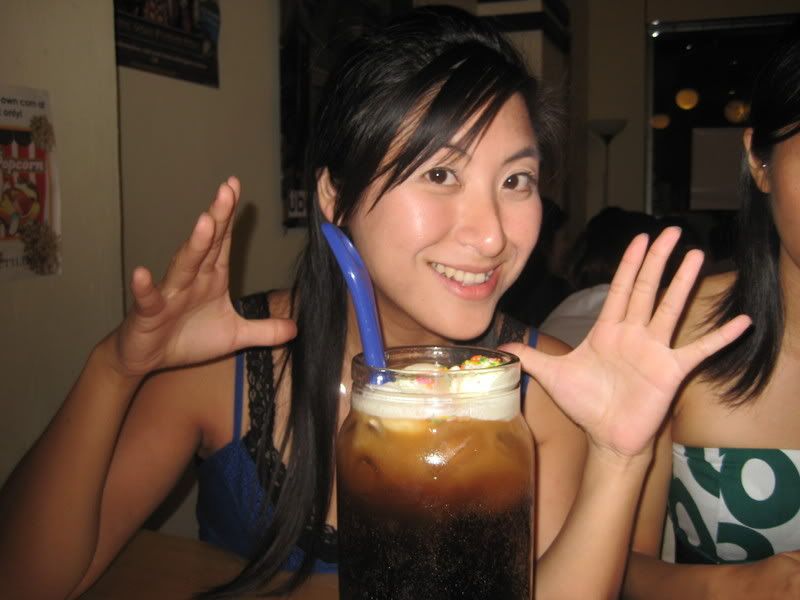Saturday, February 07, 2009
This post is a continuation from the previous as I will be trying my hands on analysing how the mode, logics and affordances interact in various multimodal productions.
1)Typolution
Inspired by Natalie, I went on to search for more videos on typography and I came across so many interesting productions! This is one of my favourite ones as it has some educational meaning to it. This video uses mixed logics (time-based and space-based) to incorporate letters, illustrations, music and animation, in order to bring across the message of saving the environment. There was a clever use of music to dramatize the whole animation and at the same time, letters were chosen based on their forms to match the things that they signify.
I would think that the affordance of using simple black and white in the video is to show the seriousness of the issue and that it should not be taken lightly.
In terms of the music used, it started off with a rather slow and soft music, which got quicker after a while. To me, it represents the slow pace of life before and how it increased its speed with industralisation + globalisation + technological advances.
The music changed abruptly to even faster beats and heavier base when it shows the rising of 'industrial factories' which contribute to air pollution. The air pollution then resulted in acid rain which eroded the factories and all the living things. I would think that the change in music gives me an idea about what is salient in the whole video, which makes me pay extra attention to that.
Lastly, I feel that the blurring of the fallen petals at the end of the video represents how we are destroying our environment to the extent that it is fading away before our very eyes.
This is all the analysis I have for this video. What else can you think of?
2) NEmation: Mingle with Lingo
This is a very entertaining video that I first saw on TVmobile and I found the mixed media very interesting. The video was created by a group of students in Crescent Girls' School for the NEmation competition. Through this competition, youths can express their notions on Total Defence through animation.
The fonts of this video are based on a ransom note effect (Wikipedia: The result of using an excessive number of juxtaposed typefaces) in typography while the other images and characters are mainly made up of collages. This video again uses mixed logics in conveying the relationship between the various Coffee Shop Lingo and the drinks they represent.
The fonts of this video are based on a ransom note effect (Wikipedia: The result of using an excessive number of juxtaposed typefaces) in typography while the other images and characters are mainly made up of collages. This video again uses mixed logics in conveying the relationship between the various Coffee Shop Lingo and the drinks they represent.
The very first greeting that says "Hey Singaporeans" striked me as trying to appeal to locals due to the deliberate 'Singlish' pronunciation of the word, 'Singaporeans' as 'Singapoleans' (/sɪŋ gə pɔ lɪənz/). Besides the initial 'Singlish' pronunciation, the rest of the commentary totally omitted the 'Singlish' pronunciation. This I feel, was trying to reflect the more educated new generation trying to preserve the Singapore culture and striving to be true blue Singaporeans.
Besides the commentator's voice, there were sound effects throughout the video to add a touch of humour. In addition to the sound effects, the multi-coloured letters as well as the characters' comical movements leaves a smile on viewers' faces. It seems to me that viewers will be easily captured by such use of humour and the informality of the message. (I'm one of them!)
In the section where the phrase "Dai Ga Ho" was screened, characters of different ethnicity came together to recite the phrase. In my opinion, this creates the effect of inclusion for people of all ethnicities in doing their parts for Total defence.
The last message in the video, "Lim (Hokkien for 'drink') our Milo, learn our Lingo" makes use rhyming words to make their message catchy. The everyday lingo was incorporated here to again reinforce their message of appealing to the true blue Singaporeans in Total Defence.
To end off, here's a list of videos that I found really interesting that you can try to analyse for the interaction of their mode, logics and affordances. Enjoy!
Besides the commentator's voice, there were sound effects throughout the video to add a touch of humour. In addition to the sound effects, the multi-coloured letters as well as the characters' comical movements leaves a smile on viewers' faces. It seems to me that viewers will be easily captured by such use of humour and the informality of the message. (I'm one of them!)
In the section where the phrase "Dai Ga Ho" was screened, characters of different ethnicity came together to recite the phrase. In my opinion, this creates the effect of inclusion for people of all ethnicities in doing their parts for Total defence.
The last message in the video, "Lim (Hokkien for 'drink') our Milo, learn our Lingo" makes use rhyming words to make their message catchy. The everyday lingo was incorporated here to again reinforce their message of appealing to the true blue Singaporeans in Total Defence.
To side track a little, I felt that the Coffee Shop Lingo displays the creativity of coffeeshop bosses/workers in making use of the characteristics of words and items to relate to drinks.
Singaporeans Rock!
Labels: Gunther Kress The Futures of Literacy Analysis
10:42 PM
